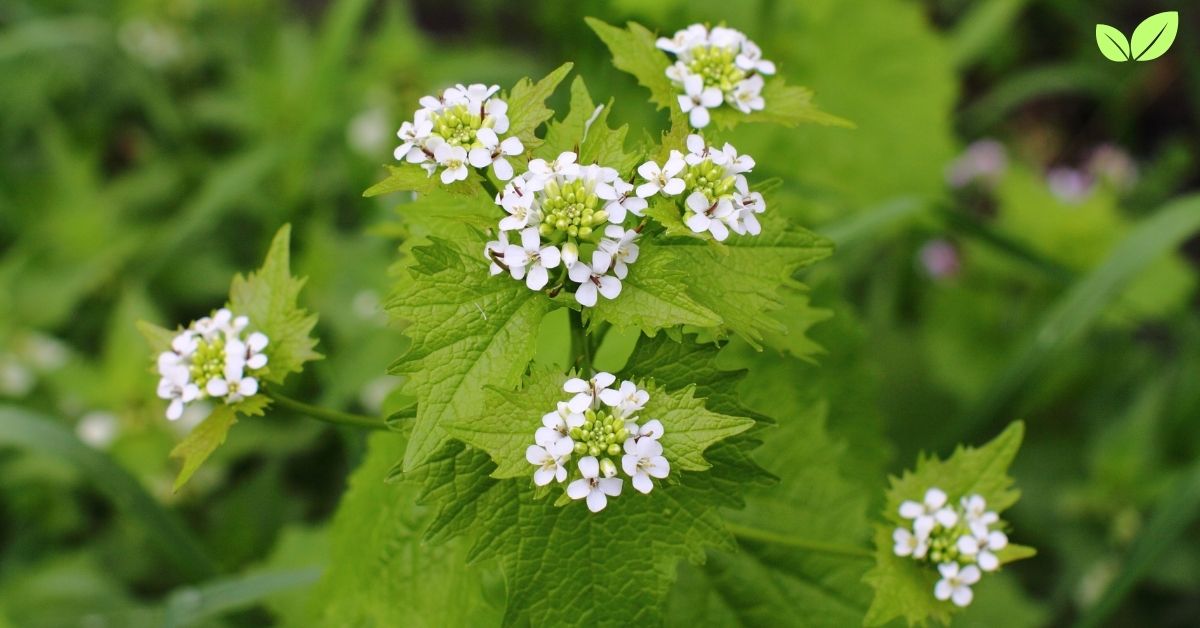Introduction to Hedge Garlic and Its Environmental Significance
Hedge garlic, scientifically known as Alliaria petiolata and commonly referred to as garlic mustard, is a biennial herb native to Europe, Asia, and parts of Africa. Characterized by its heart-shaped leaves and clusters of small white flowers, Alliaria petiolata has become widespread in North America, where it was introduced in the 19th century as a culinary herb. Since then, it has proliferated across diverse landscapes, including forests, grasslands, and roadsides, particularly in shaded areas.
While hedge garlic is recognized for its culinary and medicinal uses, its impact on ecosystems—particularly in North America—has led to widespread interest among ecologists and conservationists. As an invasive species in new environments, hedge garlic has shown a unique ability to outcompete native plants, disrupt soil chemistry, and alter plant-pollinator relationships. Exploring the environmental niche of Alliaria petiolata requires understanding its ecological role, competitive strategies, impacts on biodiversity, and the conservation challenges it presents. By examining the characteristics, adaptations, ecological roles, and implications of hedge garlic in native and non-native habitats, we can gain insight into both the benefits and challenges associated with this resilient plant.
Habitat Preferences and Adaptations of Hedge Garlic
Hedge garlic’s adaptability has enabled it to thrive in a wide range of environments, from shaded woodlands and floodplains to sunny roadsides and disturbed urban areas. Its ecological niche and spread are supported by unique adaptations that enhance its survival and competitiveness.
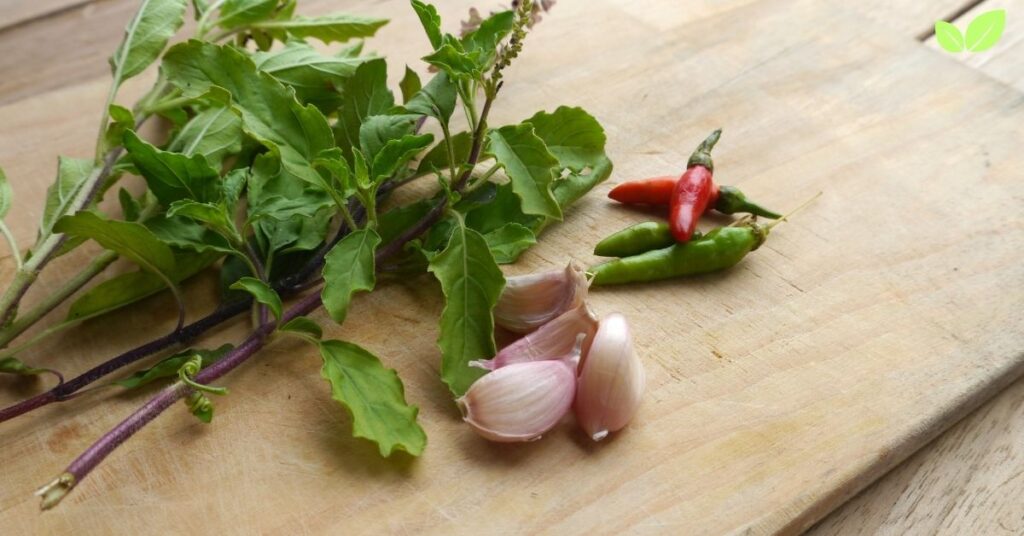
1. Preferred Habitats
Alliaria petiolata grows in diverse habitats but is most abundant in shaded or semi-shaded areas, where it finds favorable conditions for germination and growth. It thrives in moist, rich soils, such as those found in deciduous woodlands, forest edges, and riparian zones. Although hedge garlic is often associated with forested areas, it can also tolerate sunnier, more disturbed environments, including grasslands, roadsides, and urban landscapes.
In its native range, hedge garlic plays a balanced role within ecosystems, coexisting with other species and contributing to plant community diversity. However, in non-native habitats, such as North American forests, its adaptability to different light and soil conditions enables it to outcompete native flora and establish dense monocultures, particularly in disturbed soils. Its ability to colonize both shaded and open areas has contributed to its rapid spread across North America, where it is now considered one of the most aggressive invasive plants in forest understories.
2. Biennial Growth Cycle and Reproduction
Hedge garlic is a biennial plant, meaning it has a two-year life cycle. During the first year, it produces a basal rosette of leaves that remains close to the ground, allowing it to overwinter and establish itself before entering the reproductive stage in its second year. In the spring of the second year, the plant grows a tall flowering stalk that can reach up to three feet in height, producing small white flowers that attract pollinators, such as bees and flies.
This two-stage life cycle provides Alliaria petiolata with a competitive advantage, as the basal rosettes can withstand cold temperatures and survive through winter, allowing the plant to resume growth early in the spring. Additionally, each plant can produce hundreds of seeds, which are dispersed by wind, water, and animals, facilitating the spread of hedge garlic across various landscapes.
3. Allelopathy: A Chemical Advantage
One of hedge garlic’s most distinctive adaptations is its ability to produce allelopathic chemicals. Allelopathy is a process in which a plant releases biochemicals into the soil to inhibit the growth of surrounding plants. Alliaria petiolata produces a compound called sinigrin, a glucosinolate that breaks down into toxic compounds in the soil. These compounds inhibit the growth of nearby plants and can negatively impact the root systems of native vegetation, reducing competition for resources such as sunlight, water, and nutrients.
This allelopathic strategy allows hedge garlic to create areas of bare soil around its base, where its seedlings can establish themselves without competition. In North America, where native plant species have not evolved defenses against hedge garlic’s allelopathic chemicals, this trait has contributed to hedge garlic’s dominance in many forest understories.
Ecological Role of Hedge Garlic in Its Native and Non-Native Habitats
Hedge garlic’s role in ecosystems varies significantly between its native European habitats and non-native regions like North America. In its native range, it coexists with other species and contributes to biodiversity and nutrient cycling, while in North America, its invasive status poses challenges to native plants and animals.
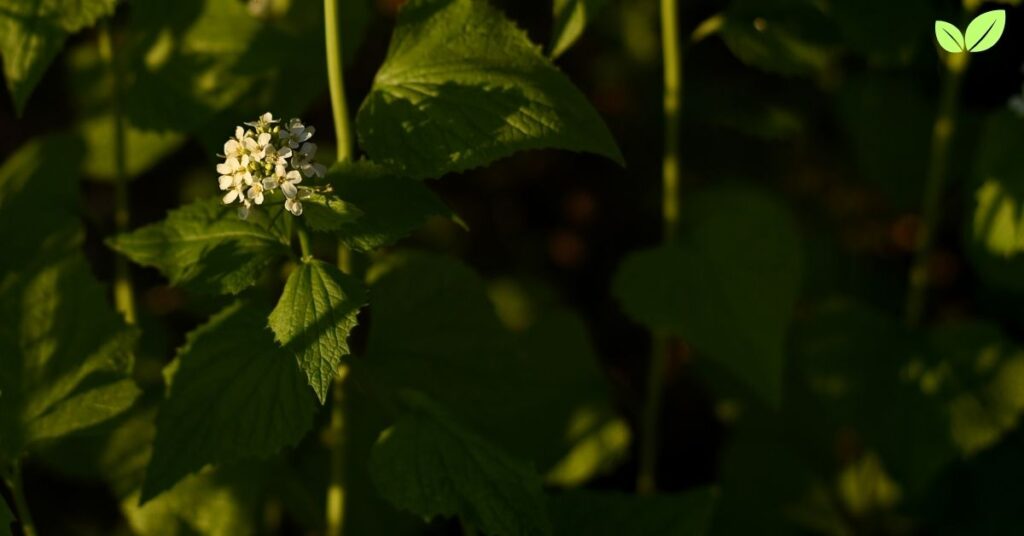
1. Role in Native Ecosystems
In its native range in Europe, Alliaria petiolata is an integrated part of forest and grassland ecosystems, where it coexists with a diverse plant community. Its moderate growth habits and allelopathic effects are balanced by the presence of native plants that have adapted to coexist with it. Hedge garlic contributes to the nutrient cycle through the decomposition of its leaves, which return organic matter to the soil.
Hedge garlic also supports specific pollinators, including bees, flies, and butterflies, that have co-evolved with it over time. It serves as a host plant for the European orange-tip butterfly (Anthocharis cardamines), whose larvae feed on hedge garlic leaves. This interaction supports the life cycle of the butterfly and contributes to the broader ecosystem’s pollinator network.
2. Impact on Non-Native Ecosystems
In North America, hedge garlic has become a problematic invasive species, particularly in forested areas. Its rapid growth, high seed production, and allelopathic effects allow it to outcompete native plants, forming dense monocultures that reduce biodiversity. As Alliaria petiolata displaces native understory plants, it disrupts food sources for native herbivores and pollinators, which rely on specific plant species for food and reproduction.
One notable example is the impact of hedge garlic on the West Virginia white butterfly (Pieris virginiensis), a North American native that lays its eggs on certain native mustard plants. Alliaria petiolata, closely related to these plants, attracts the butterfly to lay its eggs, but its leaves are toxic to the larvae, causing them to die. This phenomenon, known as an “evolutionary trap,” poses a threat to native butterfly populations and highlights the unintended consequences of hedge garlic’s spread in non-native habitats.
Additionally, hedge garlic disrupts soil microbial communities by releasing allelopathic chemicals that can affect mycorrhizal fungi, which form symbiotic relationships with native plants. By altering these underground networks, Alliaria petiolata further reduces native plant health and resilience, leading to significant changes in the structure and function of forest ecosystems.
Adaptive and Competitive Strategies of Alliaria petiolata
Hedge garlic’s success as both a native and invasive plant is driven by a combination of physical, reproductive, and chemical strategies that allow it to outcompete other species and colonize new areas effectively.
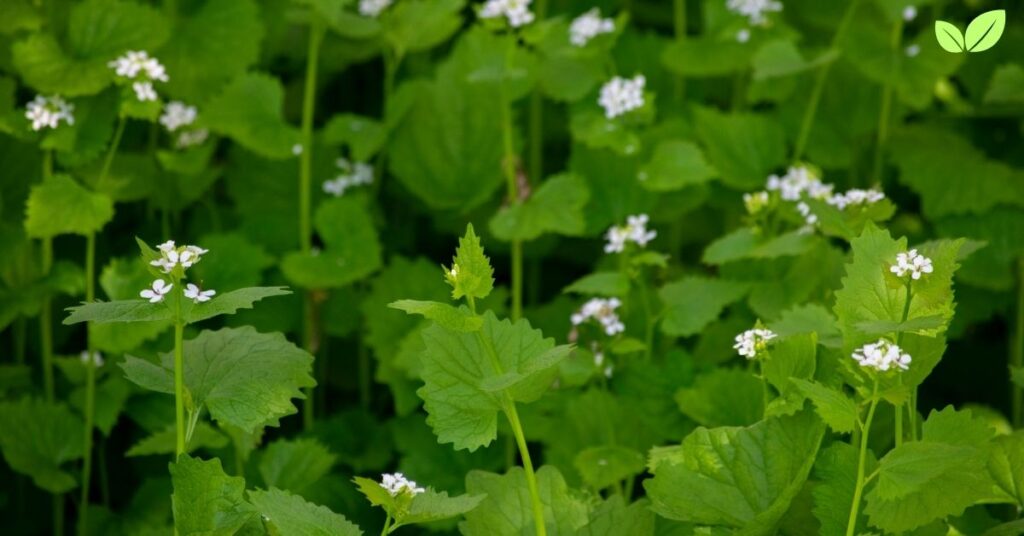
1. High Seed Production and Dispersal Mechanisms
Alliaria petiolata produces a large number of seeds each season, with each plant capable of generating hundreds to thousands of seeds. These seeds are primarily dispersed by gravity and can travel short distances from the parent plant. However, seeds are also spread by animals, such as deer, and through human activity, such as the movement of soil and equipment.
In addition to high seed production, Alliaria petiolata seeds have a high germination rate and can remain viable in the soil for several years. This seed bank allows hedge garlic to reestablish itself after disturbances, contributing to its persistence and spread in invaded habitats. The seed bank provides a continual source of new plants, even in areas where hedge garlic has been removed, making control efforts challenging.
2. Rapid Growth and Early Emergence
One of hedge garlic’s main competitive advantages is its ability to emerge early in the growing season. By the time many native plants have begun sprouting, hedge garlic’s rosettes are already established, giving it an early-season advantage in the competition for light and nutrients. This early growth allows it to shade out slower-growing plants, particularly in forest understories, where light is limited.
As a biennial, Alliaria petiolata invests energy in leaf growth during its first year, establishing a strong base before flowering in the second year. This growth strategy provides it with the resources necessary to produce large numbers of seeds, supporting its long-term persistence in an area.
3. Chemical Defense and Allelopathy
Allelopathy is perhaps hedge garlic’s most significant competitive strategy in non-native environments. By releasing glucosinolates into the soil, Alliaria petiolata inhibits the growth of other plants, particularly those that rely on mycorrhizal fungi for nutrient uptake. Native plants in North America have not evolved defenses against these allelopathic chemicals, making them especially vulnerable to hedge garlic invasion.
This chemical strategy creates zones of bare soil around hedge garlic plants, reducing competition and allowing its seedlings to establish themselves more easily. The allelopathic chemicals also disrupt soil microbial communities, which can further diminish native plant resilience and create conditions more favorable to Alliaria petiolata.
Environmental Impact and Challenges Posed by Hedge Garlic
The spread of hedge garlic in non-native regions has resulted in several ecological impacts, particularly in terms of biodiversity loss, altered soil chemistry, and disrupted plant-pollinator relationships. These impacts present challenges for conservation and highlight the need for effective management strategies.
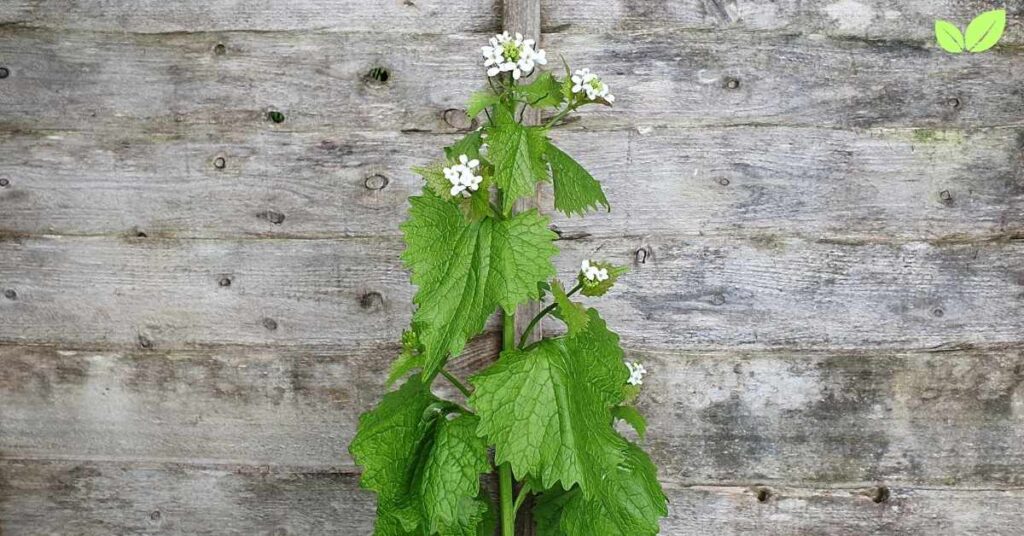
1. Loss of Biodiversity
One of the most significant impacts of Alliaria petiolata is its reduction of native plant diversity. By forming dense stands in forest understories, it shades out native species and monopolizes resources, leading to the loss of native wildflowers, grasses, and herbs. This loss of plant diversity affects the entire food web, from herbivores that rely on native plants for food to predators and pollinators that depend on these herbivores.
Native plants are often well adapted to their ecosystems and provide specialized habitats for other species. Hedge garlic’s dominance disrupts these interactions, reducing the availability of resources for wildlife and leading to a decrease in biodiversity across multiple trophic levels.
2. Altered Soil Chemistry and Microbial Communities
Hedge garlic’s allelopathic chemicals not only inhibit plant growth but also disrupt soil microbial communities, particularly mycorrhizal fungi, which form symbiotic relationships with many forest plants. These fungi assist plants in nutrient uptake, and their reduction weakens the health and resilience of native plants.
This alteration of soil chemistry has long-term implications for forest ecosystems, as it can lead to degraded soils that are less capable of supporting diverse plant communities. Hedge garlic’s influence on soil health reduces the regenerative capacity of forests and limits the potential for native plants to reclaim invaded areas.
3. Disruption of Plant-Pollinator Relationships
Hedge garlic’s presence in non-native habitats can disrupt plant-pollinator relationships, as it often competes with native plants for pollinators. Some native insects, such as butterflies and bees, are attracted to hedge garlic’s flowers but may neglect native plants as a result. In cases like the West Virginia white butterfly, hedge garlic can even create evolutionary traps, luring the butterfly to lay its eggs on a plant toxic to its larvae.
The disruption of these relationships affects not only pollinators but also the plants that rely on them for reproduction, reducing seed production and plant regeneration in native flora.
Conservation and Management of Alliaria petiolata
Efforts to control hedge garlic focus on preventing its spread, restoring native plant communities, and mitigating its impacts on ecosystems. Effective management of this invasive species requires a combination of strategies, including physical removal, prescribed burning, chemical control, and public awareness.
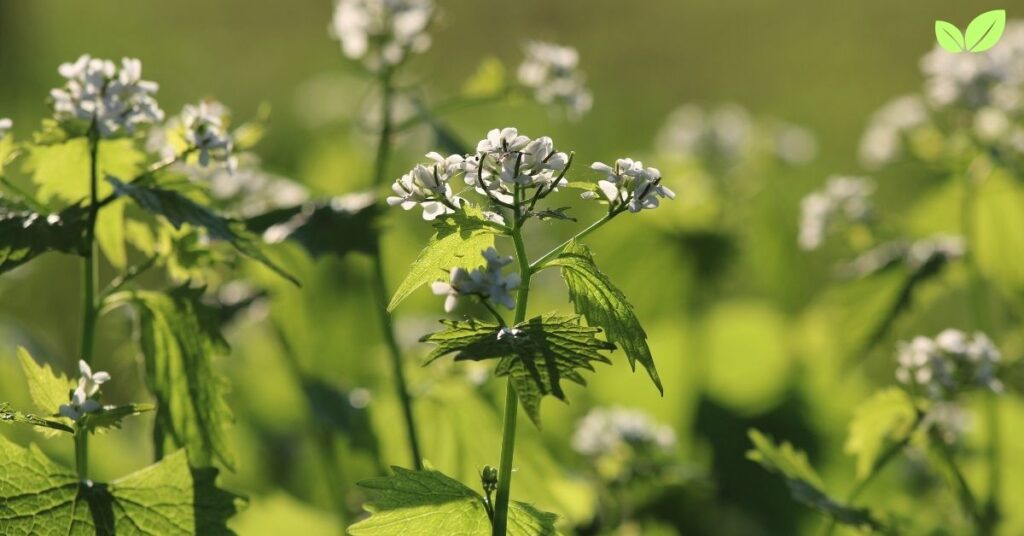
1. Physical Removal and Mechanical Control
One of the most common methods for controlling hedge garlic is manual removal. This involves pulling or cutting the plants before they produce seeds, which can help reduce seed banks in the soil. Mechanical control is particularly effective for small infestations, as removing plants before they set seed limits the spread of hedge garlic.
However, manual removal can be labor-intensive and may require multiple years of treatment due to the plant’s persistent seed bank. Ongoing monitoring is essential to prevent reestablishment, as any remaining seeds in the soil can lead to regrowth.
2. Prescribed Burning and Chemical Control
In some areas, prescribed burning has been used to control hedge garlic populations. Fire can help destroy seeds in the soil and reduce mature plants, creating an opportunity for native plants to reestablish themselves. However, prescribed burning must be used carefully to avoid damaging native species, and it may not be suitable for all habitats.
Herbicides are occasionally used to control large infestations of hedge garlic, particularly in areas where manual removal is impractical. Chemical treatments should be used cautiously to avoid harm to native plants, and targeted application is essential to minimize environmental impact.
3. Restoration of Native Plants and Public Awareness
Restoring native plant communities is an important part of managing hedge garlic. Planting native vegetation helps reestablish ecological balance, providing competition for hedge garlic and supporting native wildlife. Restoration projects often involve reseeding with native grasses, wildflowers, and shrubs to create a diverse plant community that can resist future invasions.
Public education and awareness campaigns are also essential, as human activities often contribute to the spread of invasive species. By raising awareness about the environmental impacts of hedge garlic and promoting responsible gardening practices, conservation organizations can help prevent further spread and support the health of native ecosystems.
Conclusion: The Environmental Legacy of Hedge Garlic
Hedge garlic’s unique adaptations and competitive strategies have enabled it to thrive in both native and non-native habitats, where it plays contrasting roles. While it contributes to biodiversity and nutrient cycling in its native range, its invasive nature in North America poses challenges for ecosystems, impacting plant diversity, soil health, and plant-pollinator relationships. As we work to manage and mitigate the spread of hedge garlic, we also gain insights into the complexities of invasive species and the importance of preserving native biodiversity. Through effective conservation efforts, we can protect ecosystems from the impacts of hedge garlic and ensure resilient, balanced habitats for future generations.
Read More: Marjoram (Origanum majorana): An In-depth Exploration of its Environmental Niche

